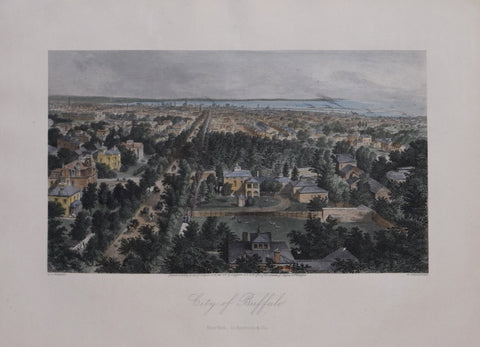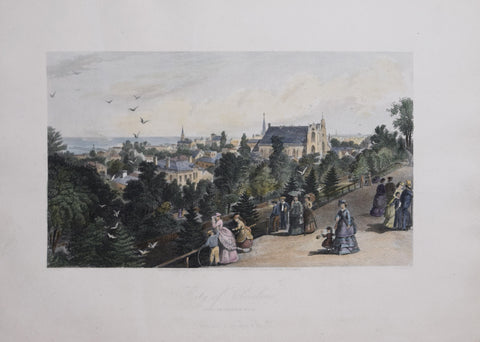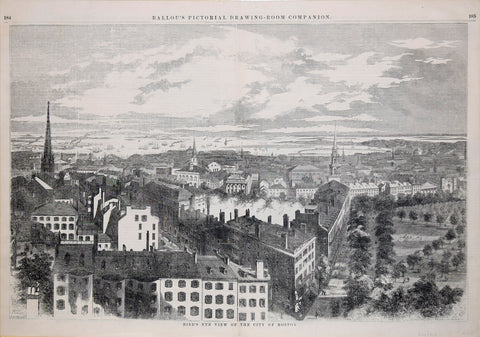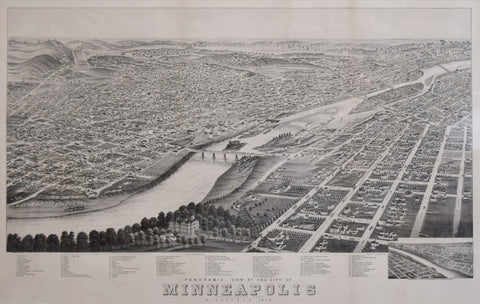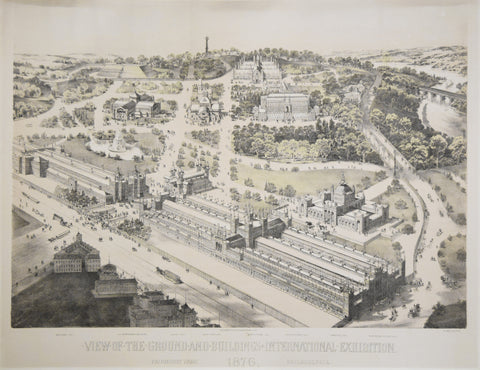
George Heap (1714-1752) and Nicholas Scull (1687-1761), An East Prospect of the City of Philadelphia taken by George Heap from the Jersey Shore
George Heap (1714-1752) and Nicholas Scull (1687-1761)
An East Prospect of the City of Philadelphia: taken by George Heap from the Jersey Shore, under the Direction of Nicholas Skull [sic] Surveyor General of the Province of Pennsylvania
Gerard Vandergucht, London, 1754.
Engraving by Gerard Vandergucht
Set of 4 Size: 20 1/8 x 80 1/8"
Founded in 1680 on a site between the Delaware and the Schuylkill Rivers, Philadelphia was ideally situated for trade and by the mid 18th century, it had become the principal port on the Atlantic coast as well as the commercial and administrative hub of William Penn's province of Pennsylvania. In 1750, Thomas Penn, son of the founder, requested "a perspective view of the city," as a dramatic advertisement to attract more entrepreneurs, merchants and settlers to the city. George Heap, an accomplished local artist, undertook a detailed rendering, from the perspective of the New Jersey side of the Delaware. In 1752, he and the surveyor of the province, Nicholas Scull, advertised for advance subscribers to an engraving after Heap's drawing. But as he was about to sail for London to have his rendering engraved on copper, Heap suddenly died. Scull took over the project and, in London, entrusted the drawing to the highly regarded Flemish-born engraver, Gerard Vandergucht (1696-1766).
The completed engraving was on a monumental scale, requiring four large folio sheets, when joined measuring 82 x 20 inches. It accurately depicts the bustling waterfront of Philadelphia, a windmill on an island and many sailing vessels, pennants flying, plying the broad river. The Penn family coat-of-arms is shown at the bottom of sheet 3, along with dedication to proprietors Thomas and Richard Penn. Sheet 4 features a detailed key, identifying streets, the Courthouse, the Statehouse (Independence Hall), a large number of steepled churches and the recently founded Academy (later the University of Pennsylvania). As Martin Snyder has written, "the use of almost seven feet of paper to portray less than a mile of waterfront, from present-day South Street to Vine Street permitted the details that is its great feature." The Scull-Heap print provides a unique view of the city that would become, a few years later, the seat of the Continental Congress and later, the capital of the newly independent nation. The grand image-the largest and most artistically significant view of any American city of its period-proved tremendously popular, and an initial press run of 500 copies was soon followed by a second of 250 copies (these with the corrected "Scull reading). Clearly, as Snyder writes, "the ravages of time upon such a giant and indeed unwieldy picture readily ; '"count for its extreme rarity today." The Scull-Heap engraving was not held in many important collections (Thomas W. Streeter, the Hon. J. William Middendorf, Laird Park, Pflaumer, Jay T. Snider) and we have located only six copies in American institutions: Colonial Williamsburg; Historical Society of Pennsylvania (2 copies, one in poor condition); Independence National Historic Park; New York Public Library (the I.N. Stokes copy); Winterthur Museum.
References: Martin P. Snyder, City of Independence: Views of Philadelphia Before 1800, 42-44; E. McSherry Fowble, Two Centuries of Prints in America: 1680-1880, A Selective Catalogue of the Winterthur Museum Collection, 23; Gloria G. Deak, Picturing America, 1497-1899, 99 ("largest and most important of the early engraved views of Philadelphia"); Nicholas B. Wainwright, "The Scull-Heap East trospect of Philadelphia," in Pennsylvania Magazine of History and Biography, vol. 73, pp.16, 22-25; Stokes 6k Haskell, American Historical Prints, p. 18.
We Also Recommend

